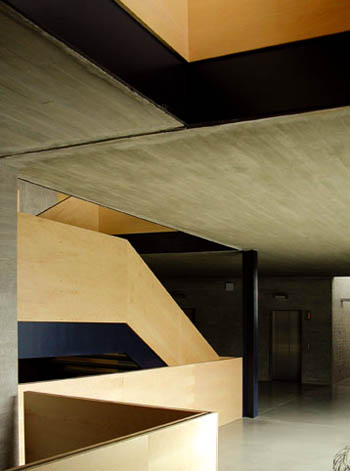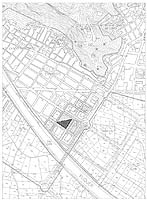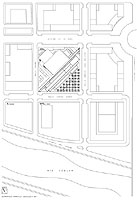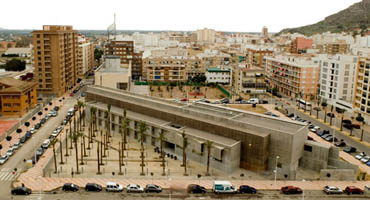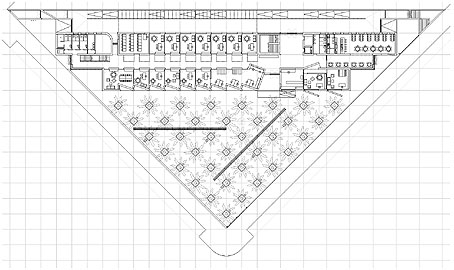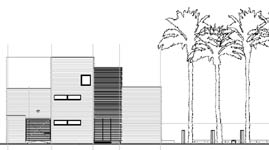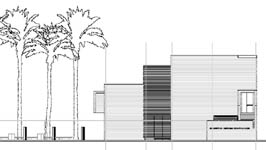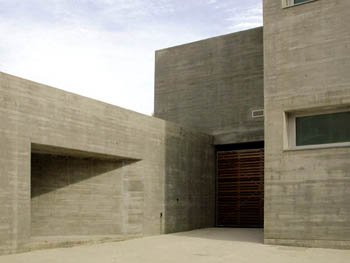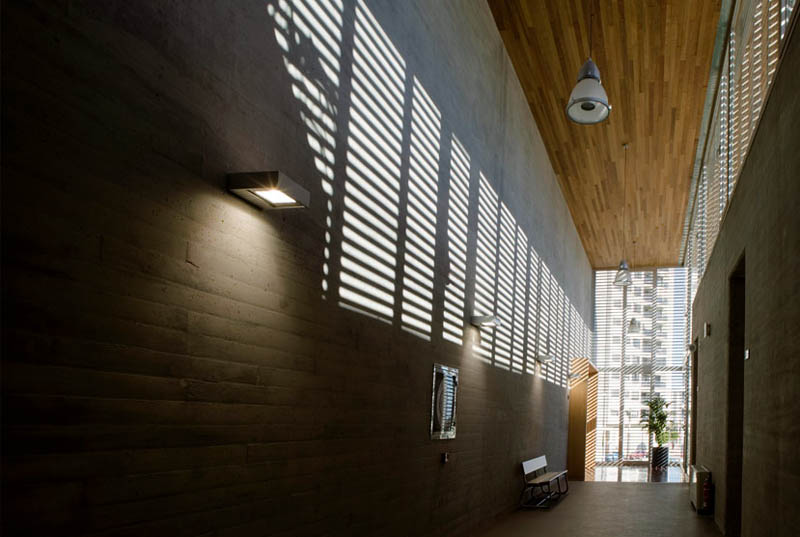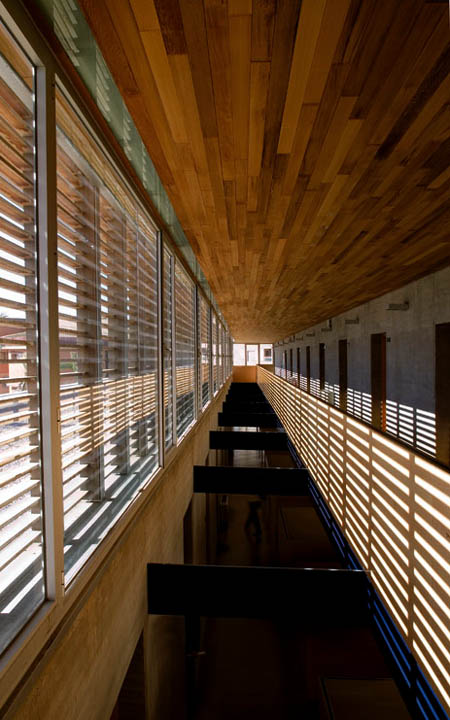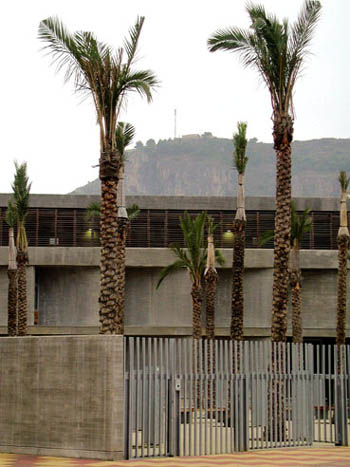| La parcela de implantación del edificio se situa en una de las
áreas de expansión urbana de Cullera, prevista como remate del tejido
del primer ensanche de la ciudad, entre el núcleo histórico al Norte y
una bolsa de suelo urbanizable no programado al Este previa a la franja
litoral. Este área, conocida como Vega Oeste y con un desarrollo paralelo
al margen izquierdo del cauce del río Xúquer en las proximidades de su
desembocadura, se caracteriza morfológicamente por un sistema viario
reticular que define una suerte de manzanas, de proporciones sensiblemente
cuadradas, conformadas virtualmente por edificación residencial abierta
de considerable volumetría, alzándose sobre las alineaciones de las
calles, cuyo negativo es un conjunto confinado de espacios interiores
privados, en ocasiones ajardinados, aunque habitualmente ocupados por
construcciones de uso terciario.
El solar objeto del proyecto tiene
forma triangular a resultas de la ordenación fijada en el planeamiento
municipal vigente y consecuencia de dividir en dos por la diagonal una de
estas manzanas de periferia.
Considerando el contexto urbano
enunciado, el proyecto propone la construcción de un edificio laminar de
112 metros de longitud y tres plantas de altura acomodado sobre la
diagonal de la manzana, permitiendo así la aparición de un espacio
previo pretendidamente público y con un firme carácter urbano, accesible
desde las calles perpendiculares que delimitan la parcela, singularizado
por una plantación regular de palmeras datileras, y ofrecido a la ciudad,
a modo de plaza, para uso y disfrute colectivo. (Desafortunadamente, a
punto de finalizarse la ejecución del conjunto, la Dirección del Centro
exigió el vallado de la parcela en su totalidad).
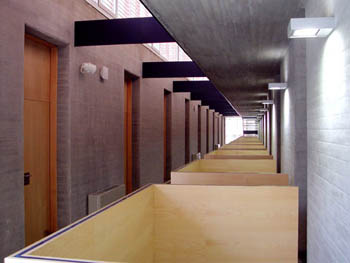
El edificio se resuelve partiendo de
una sucesión de paralelepípedos apantallados dispuestos en bandas
paralelas articuladas por corredores centrales. La elaborada sección
transversal en cascada que dota el edificio favorece la penetración
diagonal de la luz de sur hacia los espacios comunes interiores de
circulación y estancia. Las distintas piezas del programa se encajan en
esta estructura formal siguiendo un orden riguroso y una construcción
precisa, confiando al hormigón la consecución material de estos valores.
Frente a un entorno físico malogrado, se procura una respuesta contenida,
expresada sin embargo con decisión: un edificio que constituya un telón
de fondo neutro, una nueva línea del horizonte que acote y matice los límites
de la plataforma urbana de nueva creación ganada para la ciudad que el
proyecto intencionadamente posibilita, y atenuar a un tiempo la escala de
lo construido junto a un elemento de borde como es el río, al que tanto
debe la primitiva vertebración de este asentamiento.
|
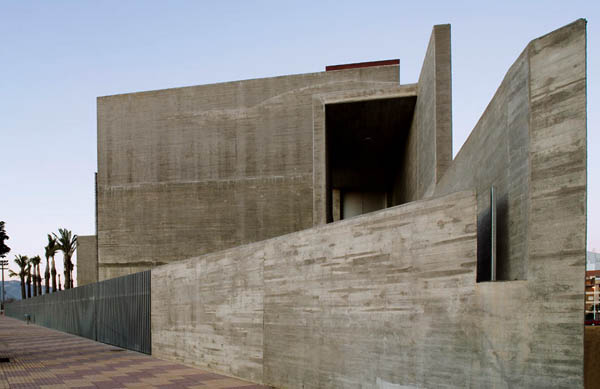
|
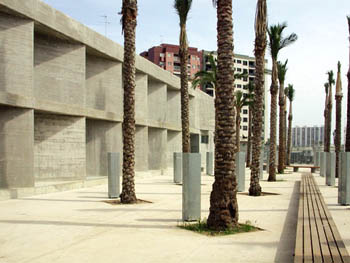
The plot is in one of the urban expansion areas
of Cullera, seen as the finishing touch to the fabric of the first extension
of the town and located between the historical nucleus to the north and, to
the east, a pocket of land allocated for development between this area and
the coastal strip. The area, known as Vega Oeste, runs parallel to the left
bank of the Xúquer river, close to its mouth. Morphologically, it has a
grid road system that defines a series of essentially square blocks,
virtually all formed of residential buildings of low density but
considerable volume. Their frontages follow the line of the streets and
their ‘negatives’ are a series of enclosed private interior spaces, on
occasion with gardens but usually occupied by tertiary-use constructions.
The project site is triangular because one of
these peripheral grid squares is divided in two diagonally by the current
municipal plan.
Considering this urban context, a 112-metre
long, three-storey high laminar building was designed. By placing it on the
diagonal, a space appeared in front of it that was intended as public and
decidedly urban in nature, accessible from the perpendicular streets that
mark the edges of the plot and distinguished by a regular arrangement of
date palms, offering the town a square-like space for communal use and
enjoyment. (Unfortunately, just as the entire project was nearing completion
the Management of the Conservatory required the entire plot to be fenced
off.).
The building is based on a succession of
parallelepiped diaphragms arranged in parallel bands articulated by central
corridors. This gives the building an elaborate cascading cross-section that
favours the diagonal entry of southern light into the shared interior
circulation routes and staying spaces. The different parts of the brief fit
into this formal structure following a rigorous order and precise
construction, entrusting the material achievement of these values to the
concrete employed. Faced with an unfortunate physical environment, an
endeavour is made to respond in a contained way, although expressed with
decisiveness, with a building that constitutes a neutral backcloth, a new
horizon that bounds and qualifies the limits of the newly-created urban
platform, gained for the city, that the design intentionally makes possible
and, at the same time, to attenuate the scale of this building near an edge
such as the river, the original structuring element of this town.
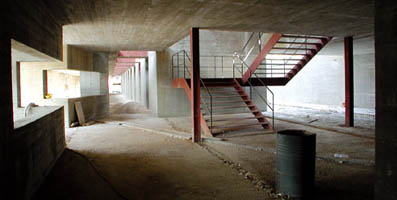
|
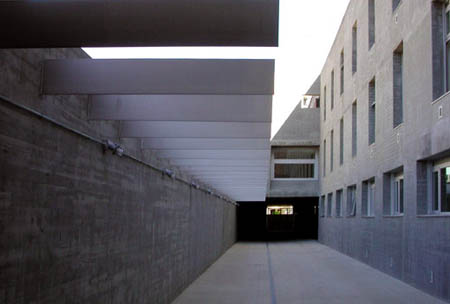
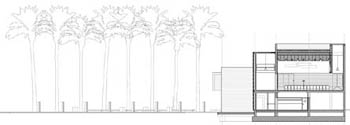
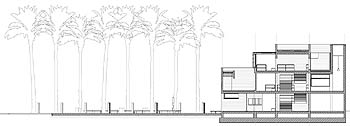
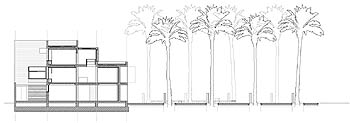
|
